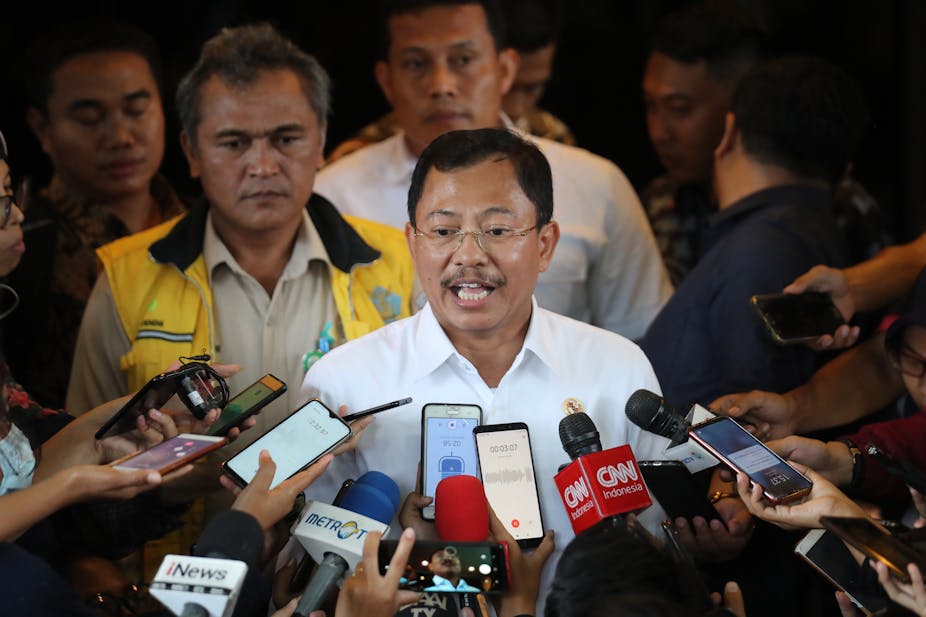The COVID-19 (coronavirus) outbreak has led to widespread travel bans and turmoil on global financial markets. But it has also given rise to xenophobic responses targeting Chinese communities in several affected countries.
This has been happening in a situation where online misinformation is credited as being as dangerous as the virus itself. Misinformation outbreaks have been central to xenophobic responses.
Researchers have already suggested this misinformation has complicated efforts to communicate the risks associated with COVID-19. For example, misinformation has amplified the fears of the virus outbreak in Indonesia as online hoaxes about COVID-19 lead to racist responses towards the Indonesian Chinese community.
Meanwhile, in Australia, misinformation has cost Chinese-Australians business and safety. In Europe, Chinese Italians have been reported to be targets of racism. Even in the Ukraine, protesters have attacked buses carrying COVID-19 evacuees.
This xenophobic sentiment is also directed at Chinese Indonesians. Therefore the Indonesian government needs to implement strategic risk communication to curb the fearmongering and racist sentiments on social media, especially after the public disclosure of COVID-19 patients in Indonesia.
Involve the public to win trust
Risk communication is not just about the scientific community or the experts providing guidelines, instructions and warnings to public. Effective risk communication needs to involve the public and it requires trust from the public.
The major challenge for risk communication in the digital era is that so many more people have so much more access and opportunity to create content of widely varying quality, including material that is misleading, fanciful or patently false.
At times, content of this sort can even be picked up by mainstream media or shared by public figures, which further spreads poor online information.
In this context, the Indonesian government’s risk communication approach has been criticised. The government is notorious for hiding problems to protect its public image.
A recent example of this was when the government tried to “restore peace” in West Papua by curbing internet access amid mass political tension.
This approach might lead to misinformation and poor-quality information spreading further on the internet. A study in Australia argues that when members of the public are dissatisfied with the information provided by authorities, they will opt for alternative information sources. As we have argued, this information can be of varying quality, and is often not fact-checked or otherwise verified.
In the context of the COVID-19 outbreak, this can lead to harmful outcomes, for example by encouraging social tension, such as the recent xenophobic sentiments towards the Chinese-Indonesians.
Dark past repeats
In the Indonesian case, managing online misinformation is not just about reducing the risks of an epidemic, but also about restoring community cohesion. Throughout the period of the Suharto regime (1965-1998), Indonesians of Chinese descent were the target of discrimination and violence.
As the regime established itself in 1965-66, Chinese-Indonesians were caught up in the anti-communist violence that was unleashed with military backing.
In the last days of the regime (1997-1998), they were again targeted by violent riots. The prejudice underlying such attacks on Indonesian-Chinese communities continued to resonate in the reform (reformasi) era that followed the fall of the Suharto regime in 1998.
In the 2017 Jakarta election, Chinese Indonesians in Jakarta again became targets of bigotry when a Chinese Indonesian served as acting-governor and then ran as governor of the capital.
“It’s such a shame that coronavirus carriers are hidden in Indonesia. It seems the government is concealing things, worrying that the Chinese will be kicked out by the locals. When it’s announced that Indonesians have been infected, we should realise that the coronavirus came from the boss of the communist countries.”
“It’s very easy for people to say bad things about Chinese Indonesians. We’ve been told to go back to Wuhan, that the slanty-eyes cause trouble, that because we have money, we can stock up all we want. The coronavirus spreads as a result of our behaviour, so we can’t go around panicking.”
Steps to improve risk communication
There are several recommendations that the Indonesian government could consider to communicate effectively during the current health crisis without causing xenophobic responses or mass panic:
1. Involve and engage health workers at the local level (e.g. midwives, general practitioners).
A one-way communication that does not address public concerns will make the public ignore the government’s risk messages. Also, people are more likely to respond to information coming from community-based sources rather than “experts”.
2. Use positive story-telling with straightforward and accessible information to avoid complexity and misunderstanding.
Australian research on anti-vaccine misinformation suggests government risk communication can be more effective when conveyed through a storytelling approach. An example would be highlighting positive stories of preventing virus spread, rather than amplifying fears of the virus.
Moreover, such research indicates the best messaging is straightforward. Social media is not a space for complex messages.
3. Be persuasive, not instructional.
People will be likely to change their perception of the source of their fears when they feel reasoned with, not instructed.
Anti-Chinese rhetoric is deeply rooted in Indonesian history and will not be easily disappear. But this means it is even more important for the Indonesian government to openly and persuasively address the anti-Chinese rhetoric.
By understanding public concerns and inviting public participation, risk communication will be more relevant and effective. The internet must be used strategically as it has now become one of the most important places people go when they they need simple answers to some of their most troublesome questions.
The COVID-19 virus does not care about race or nationality. If we let our prejudices confuse and muddy our view of the issues at hand, we will only help its spread.


